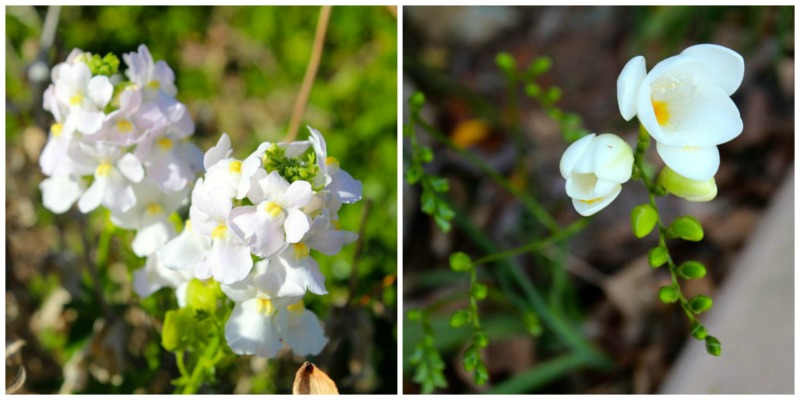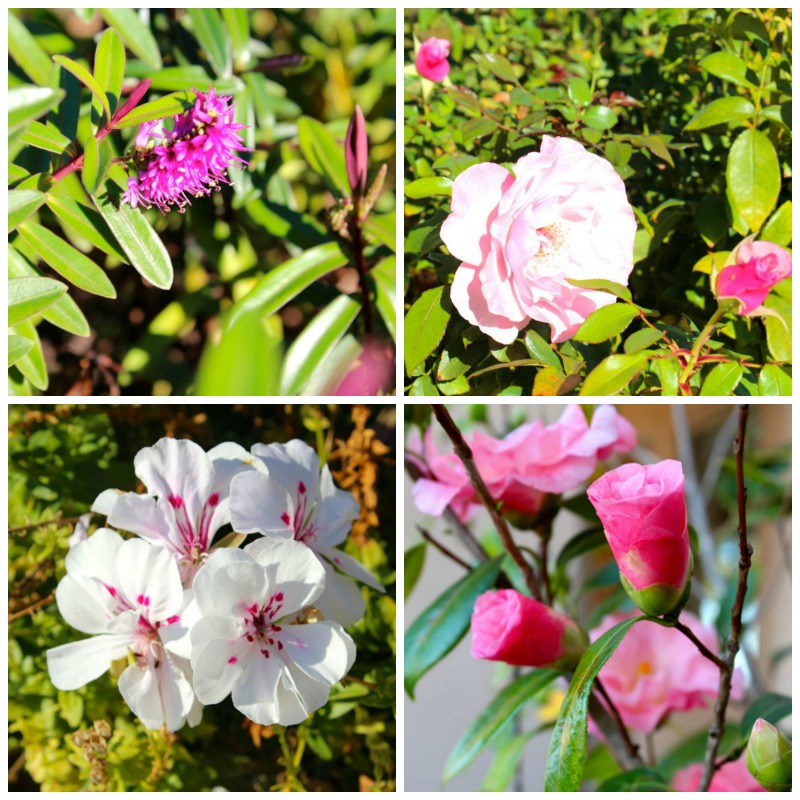I have never been a fan of succulents. To me, they always looked artificial and foreign. Nothing like the spring flowers that grow in the woods of Vermont, or the field flowers that appear throughout the summer, creating a annual timeline that foretells the coming of autumn and winter. Succulents grow so slowly, methodically, and permanently.
Last week I spied this little star flower, and took a photograph. When I looked at the plant close-up, I noticed the frilly purple lace colored on the leaves, and the pale leopard print of purple on the petals of the flowers. The plant that has been growing in a lonely pot in a corner with no attention nor appreciation has suddenly become a ‘star’ worthy of a photograph and a “come see this spectacular flower”.
I decided to look around the yard to see what else I was missing. Some of last year’s spring flowers must have reseeded themselves, volunteering to reappear after the recent rains. The freesia bulbs began coming up a few weeks ago, but now they are budding and the very first white freesia blooms have appeared, bringing their exquisite perfume to the month of February.
The spring flowers include a purple version with yellow centers. Tiny purple geraniums that grow into huge bushes and bloom profusely until the hottest weather arrives in late summer are just beginning to show their sweet little faces.
Pinks! From the tufts of drought tolerant Hebe that survive without much water but appreciatively bloom after spring rains, to the ever-blooming Our Lady of Guadalupe floribunda rose, to the ivy geraniums and the camellias that bloom only during this special time of year, pink flowers are among my favorites. Pink reminds me of the sweet cheeks of my newborn babies, pale pink roses carried in my wedding bouquet and pink-tipped white roses received at the birth of our first daughter.
Narcissus and daffodils that begin blooming in late January are always a shock to me. Just when the hardest, snowiest time of winter is oppressing the northeast, these cheery yellow flowers appear as if to mock Mother Nature. As a Vermonter, I learned that Spring was a season to be earned by surviving the brutal winter. Here in southern California we survive brutal fires, droughts, winds, earthquakes. I guess winter should be the least of our worries, and so maybe it’s okay to enjoy spring flowers at a time when the rest of the world is living through winter. Tropical flowers like the yellow amaryllis become huge bushes in our landscaping that need to be pruned, and the drought-tolerant Moroccan daisy keeps it’s growth confined to a polite mound, flowering easily when it finally receives water after patiently surviving with minimal water during the hottest months.
I used to go to the nursery and spend hours picking out the flowers that would create the garden I thought I wanted. After investing money in the plants, and time in the planting, the garden just never looked as I imagined it would, because the plants I chose just didn’t belong here. A few years ago I stopped buying plants, opting for wildflower seeds instead. When the rains come in winter, (IF they come), those seeds know exactly when it’s time to sprout and grow and bloom, transforming the bank in front of our house into a wonderland of color. Throughout the cooler months appears a progression of blossoms that reminds me of the field flowers in Vermont. It’s nice to have a drought tolerant flowering bush to tide me over the hot months too.
A few years ago some dear friends shared an orchid with us. It never occurred to me to think of an orchid as a plant to grow in a pot on a sheltered patio, but this one is huge and takes very little care. Each little cluster of flowers is like a special bouquet, reminding me of orchid occasions like Easter and Mother’s Day.
I found this tiny potted red cyclamen at the grocery store this week and decided to bring it home. It’s small like a violet that emerges from the brown leaves in the woods after the snow has melted, and the flowers are perfect miniatures of the bigger cyclamen that are popular for Valentine’s Day. How could I resist?
Note: These flowers are offered in memory of Dr. James Wightman, my college economics professor and mentor at SUNY Potsdam, whose love of the garden influenced everyone who knew him. Dr. Wightman’s high standard for excellence in scholarship and life in general was a precious gift. I will always remember his appreciation of great music and his enthusiasm and expertise in gardening, and his willingness to share all that he could with the people he loved. James W. Wightman 1932-2015











5 Comments
Leave a reply →